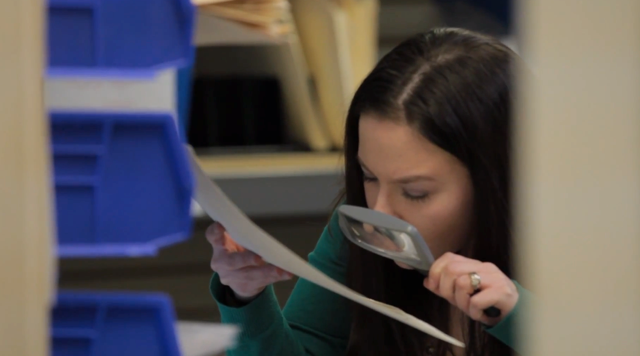[vc_row][vc_column][vc_column_text]Kath at RR here. My dad likes to pull my leg – a lot. Since I was a kid, he’s tried to convince me of his tall tales. He told me Elvis Presley wrote “I Will Take You Home Again, Kathleen” for me. He told me they really did drive that car off that cliff on the television show – “That was their last episode.” He told me the shiny black rock with the holes like Swiss cheese was an actual moon rock, and that other weird rock was a fossil.
That’s the thing about family stories. Sometimes they get repeated so much, they start to become “fact.” But what about the stories of where that “rare artifact” or “original painting” came from? How do you know the real value of an antique or family heirloom? How do you show provenance?[/vc_column_text][vc_empty_space height=”15px”][vc_column_text]
What is provenance?
Provenance (noun): 1. the place of origin or earliest known history of something; 2. the beginning of something’s existence; something’s origin; 3. a record of ownership of a work of art or an antique, used as a guide to authenticity or quality.
“Provenance (from the French provenir, ‘to come from/forth’), is the chronology of the ownership, custody, or location of a historical object. The term was originally mostly used in relation to works of art, but is now used in similar senses in a wide range of fields, including manuscripts, printed books, science and more.
“The primary purpose of tracing the provenance of an object or entity is normally to provide contextual and circumstantial evidence for its original production or discovery, by establishing, as far as practicable, its later history, especially the sequences of its formal ownership, custody, and places of storage.” — Wikipedia [/vc_column_text][vc_empty_space height=”15px”][vc_column_text]
Why is provenance important?
The provenance of works of fine art, antiques and antiquities is of great importance, especially to their owner. A good provenance:
- Increases the value of an item;
- Confirms the date, artist and, especially for portraits, the subject of a painting. It may confirm whether a painting is genuinely of the period it seems to date from.
- Proves an item has not been altered and is not a forgery, a reproduction, or stolen/looted art.
[/vc_column_text][vc_empty_space height=”15px”][vc_column_text]
How do I show provenance?
Some ways include:
- Original receipts
- Handwritten notes or inscriptions (plaques, sewn-in tags, notes on backs of paintings)
- Photographs, often showing item with original owner or with a well-known person (politicians, musicians, artists, actors, etc.). We use this a lot.
- Gift documentation (especially a note from a famous person giving the gift)
- Certificates of Authenticity
- A complete list of owners
- Auction records
- Recorded in a home inventory: Mentioned in a will or a diary or a visitor’s written account; some kind a bill of sale or sales receipt
The quality of provenance of can make a considerable impact on its selling price. An expert certification can mean the difference between an object having no value and being worth a fortune.
That’s why you need professionals. RR Auction has established our reputation as trusted specialists who work with top experts in provenance. [/vc_column_text][/vc_column][/vc_row]

